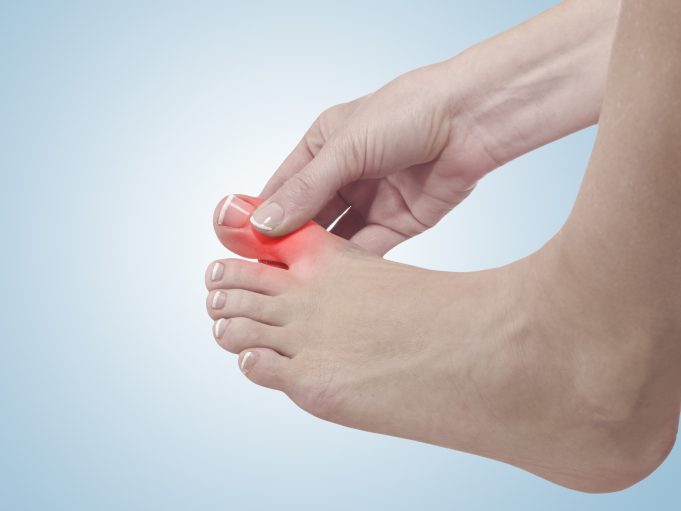S
ubungual hematoma, or bleeding under the toenail, is a fairly common occurrence among active individuals like sports officials. It can result from repeated minor friction of a toe with the shoe or it can happen acutely in a single traumatic incident, for example when someone steps on your toe or you stub your toe. An acute traumatically induced subungual hematoma is usually instantly very painful whereas the other type of subungual hematoma may not be painful at all.
The treatment is different for each type of hematoma. The nontraumatically induced hematomas frequently resolve on their own without treatment. The discoloration naturally fades and resolves as the new nail grows out naturally and replaces the damaged one. The dried blood is absorbed or grows out with the new nail. There may
be some minor discomfort, but generally speaking it isn’t nearly as painful as an acute traumatically induced subungual hematoma. If the nail becomes loose it may be trimmed back. In rare circumstances it gets very loose, causes pain and may have to be removed. If a loose toenail becomes painful, removal usually results in instant relief of pain.
Traumatically induced subungual hematomas are almost always exquisitely painful. They may be caused by an athlete stepping on your foot with cleated shoes, your toe getting hit by a baseball or any other heavy direct pressure being quickly and forcefully exerted on your toe. Weight bearing or wearing shoes may be nearly impossible if the pain is bad enough. An acute traumatically induced subungual hematoma frequently needs to be
drained by a healthcare professional to relieve the pain. It is a very simple procedure, done under local anesthesia in an office, emergency room or outpatient setting. There is some aftercare that must be doneat home to ensure normal healing without infection. That often consists of soaking the toe or foot daily and applying antibiotic cream and a small bandage. In very painful situations, or if a large bandage is required, a special surgical shoe may be used to allow for walking and for lesspainful healing. Post-operative pain medication may be prescribed but frequently over-the-counter pain medication is sufficient. If the nail has to be completely removed, a new nail will usually regrow in a few months. The good news is pain relief is almost instantaneous when the pressure from the blood is relieved. Officiating activities frequently can be resumed fairly quickly after
treatment.
In more severe trauma, an X-ray should be taken to rule out a fracture of the toe. A simple fracture will prolong the overall healing time by several weeks but shouldn’t affect the healing of the toenail. More severe trauma, acute bleeding that doesn’t stop or a deep cut or laceration of the toe, of course, requires immediate medical attention.
Occasionally, trauma to the toenail will result in damage to the nail root or matrix. That can result in ridges, lines or splitting of the toenail when it finally regrows. Sometimes that is a permanent situation, but frequently it will resolve with time if the nail root hasn’t been badly damaged.
Another complication of nail trauma is a fungal infection of the toenail. That results in a discolored, flaky, crumbling toenail which can be uncomfortable. Fungal toenail infections can be successfully treated with medication, after healing from the initial injury.
A word of caution: Not all nail discoloration is the result of blood under the toenail. There have been cases of malignant melanoma or skin cancers that have been mistaken for blood underneath the toenail. Delaying treatment in that situation could be life- or limb-threatening. Delaying treatment in that situation lowers the success rate for treatment and increases the possibility of metastasis, or spreading of the malignancy to other parts of the body. When in doubt, get it checked out by a healthcare professional.
What's Your Call? Leave a Comment:
Note: This article is archival in nature. Rules, interpretations, mechanics, philosophies and other information may or may not be correct for the current year.
This article is the copyright of ©Referee Enterprises, Inc., and may not be republished in whole or in part online, in print or in any capacity without expressed written permission from Referee. The article is made available for educational use by individuals.
















